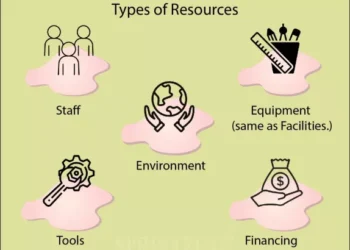Bridges connecting blockchains are crucial to the Web3 internet because they facilitate the movement of assets across blockchains, which is necessary for interoperability. Blockchains can only perceive other blockchains, smart contracts, and cryptocurrency tokens. They are unable to exchange tokens, NFTs, or data across blockchains without the help of third-party ‘oracles.’
In addition, distinct blockchains are better suited to do certain jobs because of their unique architecture and features, and attempting to utilize a single blockchain for everything would lead to overburdened networks and excessive blockchain transaction (‘gas’) costs. For some time now, interoperability across blockchain networks has been a hot topic, since it would enable blockchains with varying areas of focus to exchange assets inside their individual smart contract ecosystems.
Bridges let blockchains trade cryptocurrency and NFTs. Locked tokens may be produced using smart contracts and Web2 scripts on the other side of a bridge. Burning token packaging unlocks them. Bridges may route traffic from congested blockchains like Ethereum to Solana. “Cross-chain” refers to apps that utilize blockchain bridges. Wrapped BTC, a centralized (or “federated”) bridge between the Bitcoin and Ethereum blockchains, is the most well-known example. Decentralized bridges use smart contracts and Web2 server scripts and need extensive encryption to validate the sender and receiver. You can use bridge TRC20 to BEP20 in one click with a decentralized cross-chain swap solution like Allbridge Core.
For Hackers, Bridges Are A Prime Target
In order to relay information across different blockchains, bridges often use a hybrid of Web3 blockchain technology and traditional Internet protocols. This makes blockchain bridges a prime target for cybercriminals, since the digital assets held in their smart contracts may be worth hundreds of millions or even billions of dollars. Unfortunately, many wrong turns have been taken in the pursuit of the optimal design for blockchain bridges. Theft of assets worth hundreds of millions of dollars may occur due to the simplest of mistakes. This means that blockchain bridges are still at the (very) vanguard of technological development.
Most notably, the North Korean Lazarus Group in March 2022 successfully hacked the Ronin bridge for $600 million. This attack was the biggest and most notorious of its kind and followed a minor error in the smart contract update that enabled everyone to “loot” the bridge’s assets in a frenzied frenzy. Chainalysis, a blockchain analytics company, found that over $2 billion in stolen assets may be connected to blockchain bridge breaches. Developing such bridges remains a “technical problem.” Many VC firms are willing to recompense bridge assault victims since the eventual economic potential of blockchain bridges exceeds their immediate losses.
Since they facilitate the movement of assets across blockchains with diverse areas of expertise, blockchain bridges are an essential part of the Web3 economic layer as it develops. Several well-publicized bridge hacking has resulted in losses in the billions of dollars, making bridges a prime target for cybercriminals. Due to the unproven nature of bridges and the lack of an established design, it is unwise to entrust substantial quantities of money to them without adequate protection against hacking. Still, blockchain bridges are a crucial part of Web3’s future, and developers will figure out a safe and standardized method to construct and maintain them.







